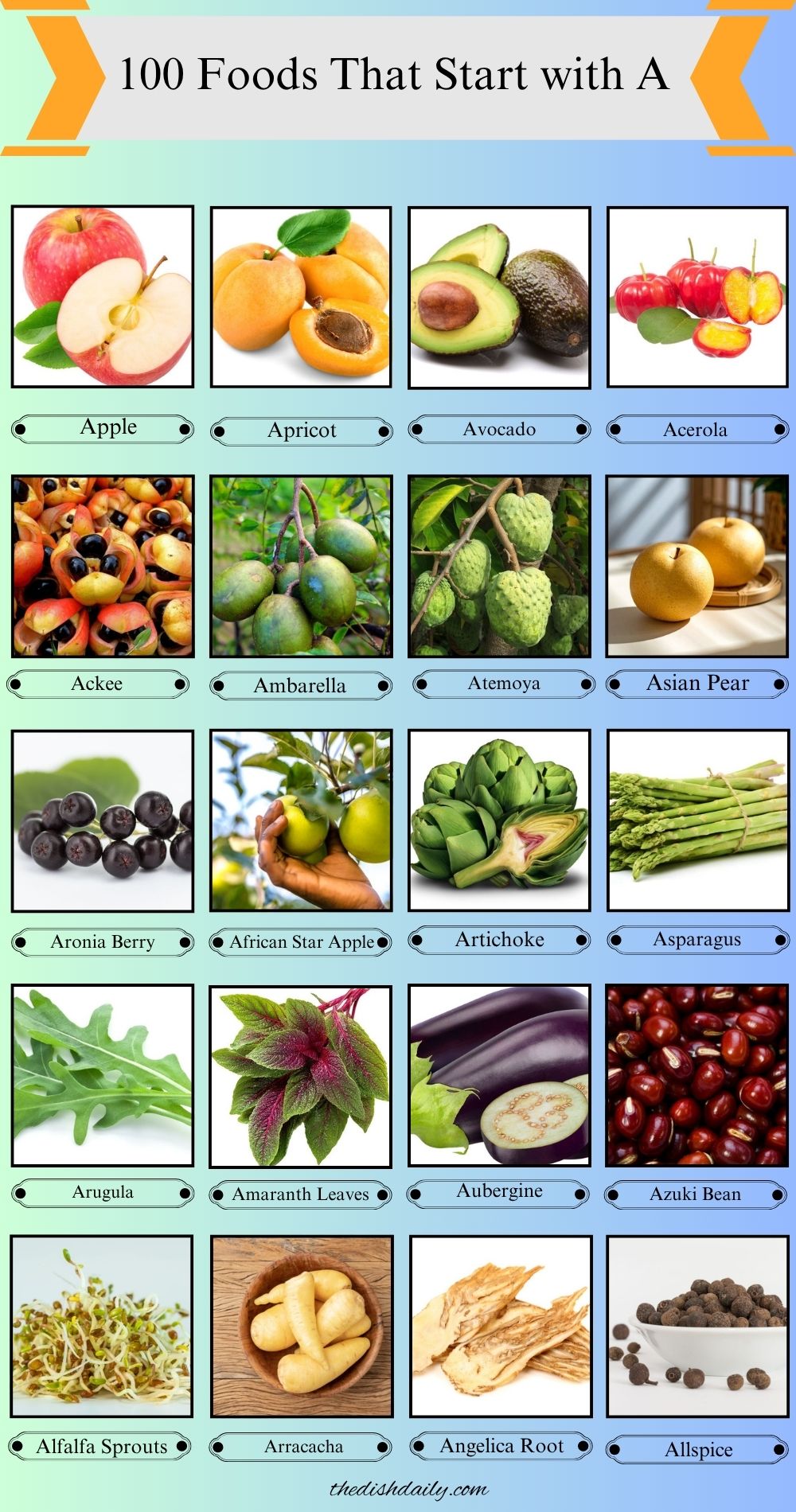Ever wondered how many delicious foods start with the letter A? From crisp apples and creamy avocados to aromatic allspice and hearty Alfredo pasta, this list is a feast of flavors that’ll surprise your taste buds. Whether you’re a foodie, a home cook, or just curious, our roundup of 100 foods that start with A takes you on a tasty journey across fruits, vegetables, grains, dairy, spices, snacks, and even full dishes and drinks. You’ll discover familiar favorites and rare finds from around the world — all united by one letter! So grab your apron (or your notepad) and get ready to explore a world of A-mazing ingredients perfect for cooking inspiration, fun quizzes, or your next culinary adventure.
Foods That Start with A
FRUITS
1. Apple
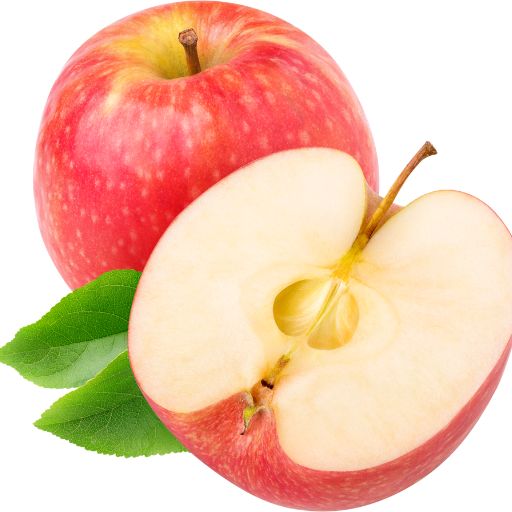
Originating from Central Asia, apples are now grown in orchards across the world, especially in the U.S., China, and Europe. They come in a range of flavors — from sweet Honeycrisp to tart Granny Smith — and are typically harvested from late summer through fall. Packed with fiber, vitamin C, and antioxidants, apples support digestion and heart health. They’re incredibly versatile, enjoyed fresh, baked in pies, or simmered into sauces and ciders. (Malus domestica)
2. Apricot
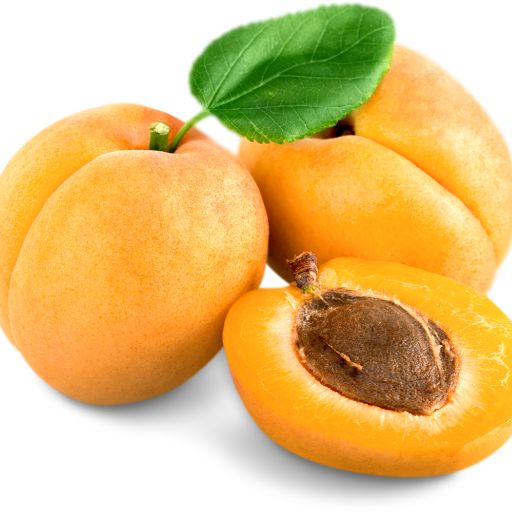
Native to Central Asia and cultivated widely in Mediterranean regions, apricots offer a delicate balance of sweetness and tang. Their peak season runs from late spring to early summer. These golden fruits are rich in beta-carotene and vitamin A, known to boost skin and eye health. Apricots shine in jams, pastries, salads, and even savory tagines. (Prunus armeniaca)
3. Avocado
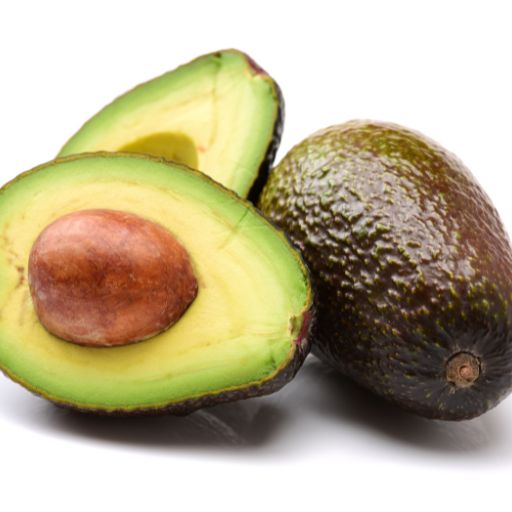
Originating in southern Mexico, avocados are now grown throughout Central and South America as well as California. Their creamy, buttery texture and mild, nutty flavor make them a year-round favorite, with peak season from late winter to early summer. Rich in healthy fats, potassium, and fiber, avocados promote heart and skin health. They’re a staple in guacamole, salads, toast, and smoothies. (Persea americana)
4. Acerola
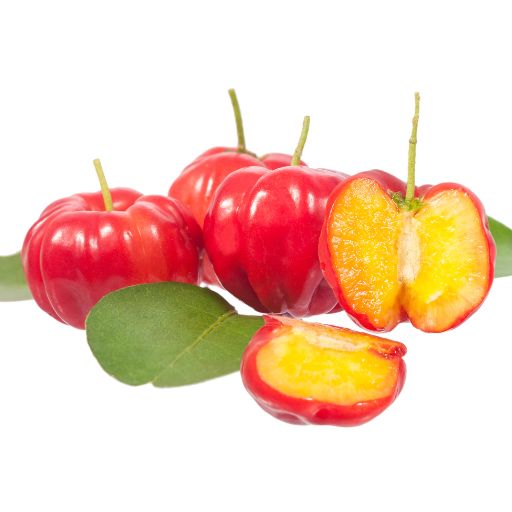
Also called the Barbados cherry, acerola hails from the Caribbean and parts of South America. It has a tangy-sweet flavor reminiscent of a mix between cherry and citrus, and is typically in season during spring and early summer. This fruit is celebrated for its exceptionally high vitamin C content, supporting immunity and skin vitality. Acerola is often used in juices, jams, and supplements. (Malpighia emarginata)
5. Ackee
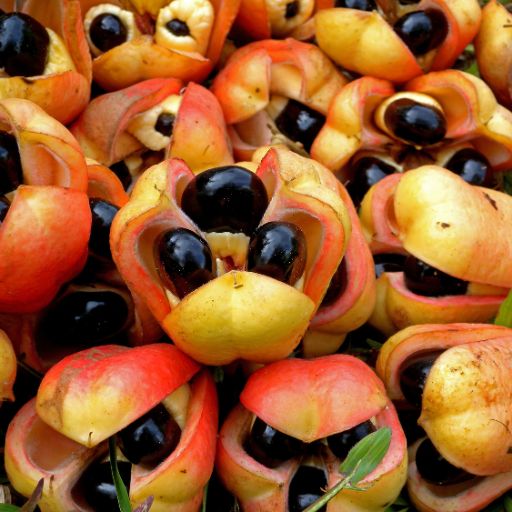
A native fruit of West Africa, ackee is now Jamaica’s national fruit and a key part of its cuisine. When ripe, it has a soft, buttery texture and a mild, nutty flavor. Harvested mainly in winter and spring, ackee provides protein, fiber, and essential fatty acids. It’s most famously cooked with salted codfish in Jamaica’s beloved dish, “Ackee and Saltfish.” (Blighia sapida)
6. Ambarella
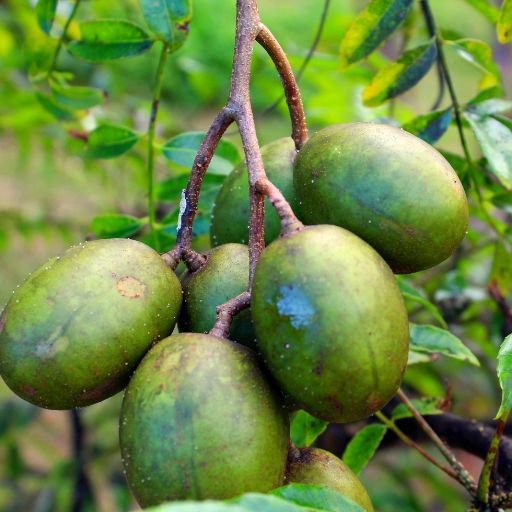
Commonly grown in tropical regions like Southeast Asia and the Caribbean, ambarella offers a crisp texture with a mix of tart and slightly sweet flavor. The fruit is usually harvested in summer. High in vitamin C and fiber, it supports digestion and immunity. Ambarella is eaten fresh with chili salt, made into chutneys, or used in refreshing juices. (Spondias dulcis)
7. Atemoya
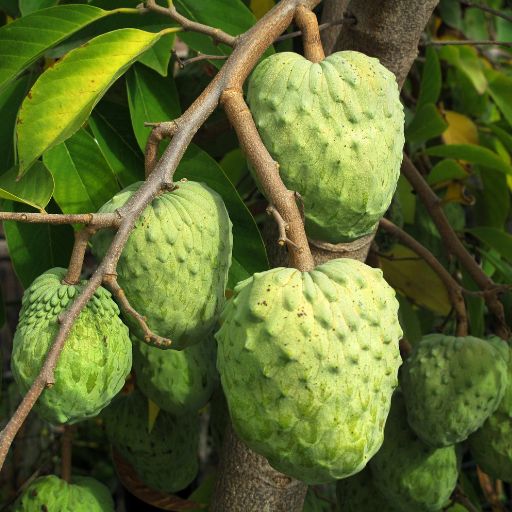
A hybrid of the sugar apple and cherimoya, atemoya is native to the tropics of South America and cultivated in areas like Taiwan and Florida. It has a creamy, custard-like flesh that tastes like a blend of pineapple and vanilla. In season from late summer through early winter, it’s rich in vitamin C, B6, and magnesium. Atemoya is enjoyed chilled, blended into smoothies, or served as a dessert fruit. (Annona × atemoya)
8. Asian Pear

Originally from East Asia, especially China, Korea, and Japan, Asian pears are prized for their crisp, juicy bite and mild sweetness. They’re harvested in late summer through early fall. These pears are rich in fiber, vitamin C, and antioxidants that promote hydration and gut health. Often eaten fresh, they’re also used in salads, marinades, and desserts. (Pyrus pyrifolia)
9. Aronia Berry
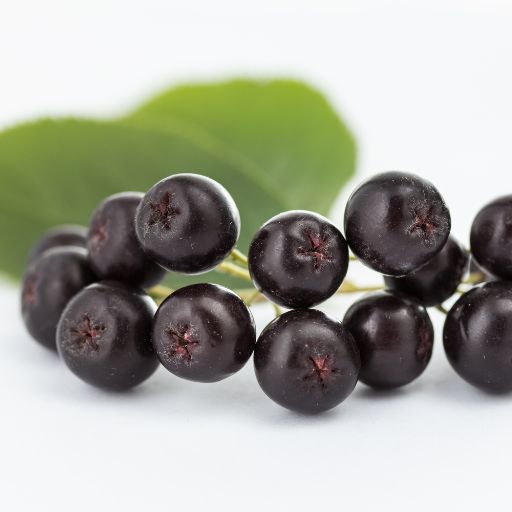
Also known as chokeberry, the aronia berry originates from North America and thrives in temperate climates. It has a tart, astringent taste and is usually harvested in late summer. These berries are packed with antioxidants and anthocyanins that support heart and immune health. They’re commonly used in juices, jams, syrups, and baked goods. (Aronia melanocarpa)
10. African Star Apple
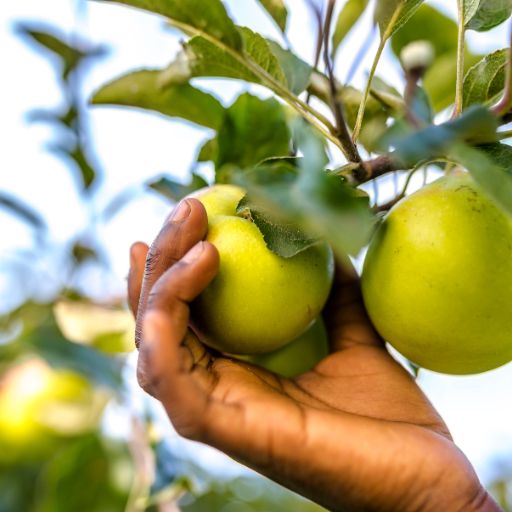
Native to tropical West Africa, the African star apple has a sweet yet slightly tangy flavor and a jelly-like texture. It’s typically in season from December to April. Rich in vitamin C, calcium, and iron, this fruit is valued for boosting immunity and bone strength. It’s enjoyed fresh, juiced, or used in traditional African desserts. (Chrysophyllum albidum)
VEGETABLES
11. Artichoke
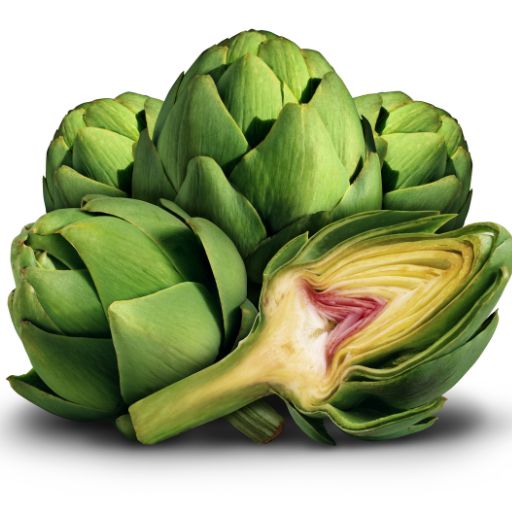
Native to the Mediterranean region, artichokes are now widely grown in California and southern Europe. They have a mild, nutty flavor with a tender heart and slightly bitter leaves. Artichokes are in season from spring through early summer. Packed with fiber, vitamin C, and antioxidants, they help support liver and digestive health. Commonly steamed, roasted, or stuffed, artichokes also shine in dips and pasta dishes. (Cynara scolymus)
12. Asparagus
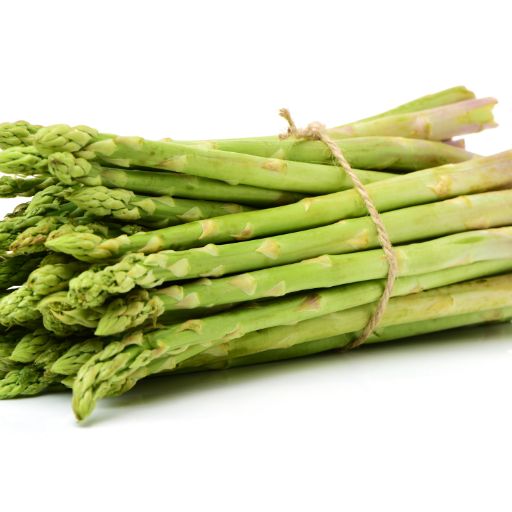
Originating from Europe and Western Asia, asparagus is a springtime vegetable loved for its grassy, slightly earthy taste. Its peak season runs from March to June. Rich in folate, fiber, and vitamin K, asparagus promotes healthy digestion and supports cell growth. It’s delicious when grilled, roasted, or added to risottos and salads. (Asparagus officinalis)
13. Arugula
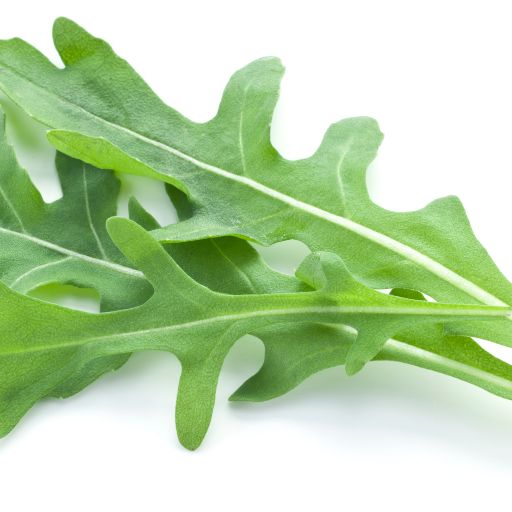
Arugula, native to the Mediterranean, brings a peppery, slightly bitter flavor that adds zest to salads and sandwiches. It thrives in cooler seasons, mainly spring and fall. This leafy green is packed with calcium, potassium, and antioxidants that benefit bone and heart health. Arugula is often tossed in salads, used as a pizza topping, or blended into pesto. (Eruca vesicaria)
14. Amaranth Leaves
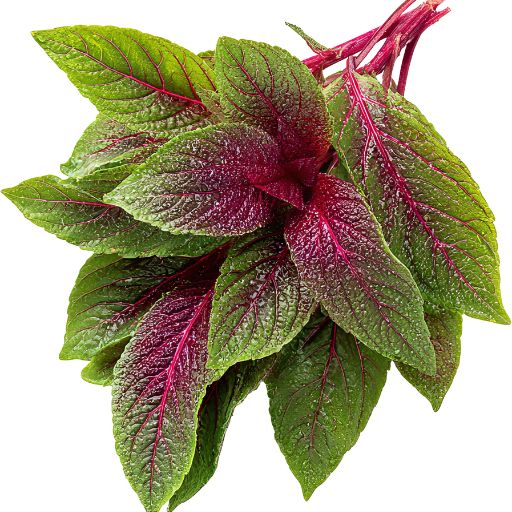
Amaranth leaves are native to Central and South America but are now grown worldwide in tropical regions. They have a mild, spinach-like taste with a hint of nuttiness and are usually harvested during warm months. High in iron, calcium, and vitamin C, they’re great for boosting immunity and supporting blood health. These leaves are cooked in soups, stir-fries, or steamed as a side dish. (Amaranthus tricolor)
15. Aubergine (Eggplant)
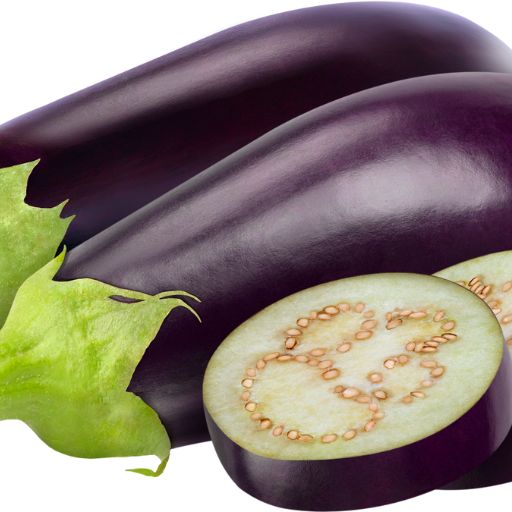
Originally from India and Southeast Asia, aubergine — or eggplant — has a mild, slightly bitter taste that becomes creamy when cooked. Its main season is summer through early fall. It’s rich in fiber, potassium, and antioxidants that promote heart and brain health. Popular in cuisines worldwide, eggplant stars in dishes like ratatouille, baba ganoush, and eggplant parmesan. (Solanum melongena)
16. Azuki Bean Sprouts
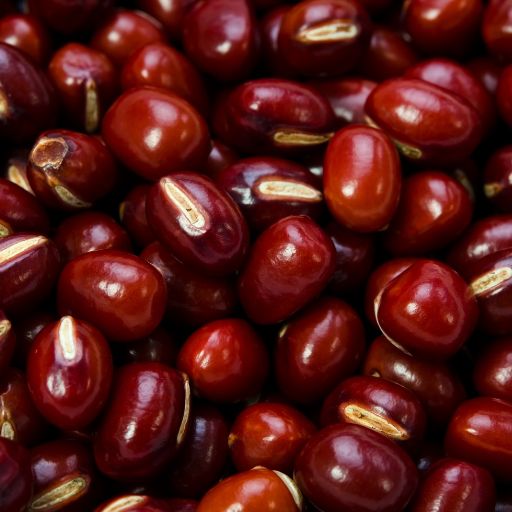
Grown mainly in East Asia, azuki bean sprouts come from the small red azuki beans. They have a crisp texture and a subtly nutty, earthy flavor. Sprouting season is year-round under controlled conditions. High in protein, folate, and enzymes, they aid digestion and boost metabolism. These sprouts are used in Asian salads, stir-fries, and soups. (Vigna angularis)
17. Alfalfa Sprouts
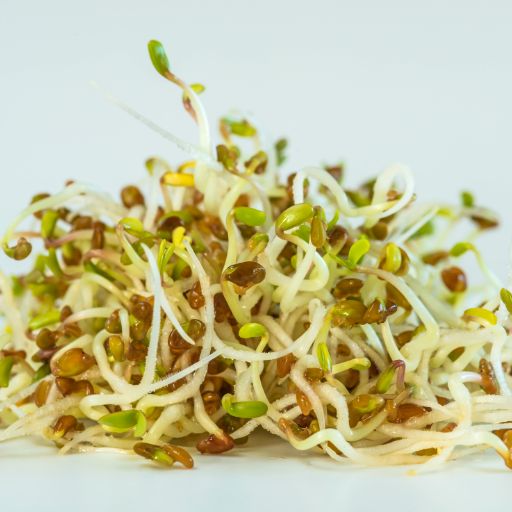
Native to South and Central Asia, alfalfa sprouts have a mild, slightly sweet taste and a crunchy texture. They can be grown indoors throughout the year. These sprouts are nutrient-dense, containing vitamins K, C, and B, as well as phytoestrogens that support heart and bone health. Commonly added to sandwiches, wraps, and salads, they add freshness and crunch. (Medicago sativa)
18. Arracacha
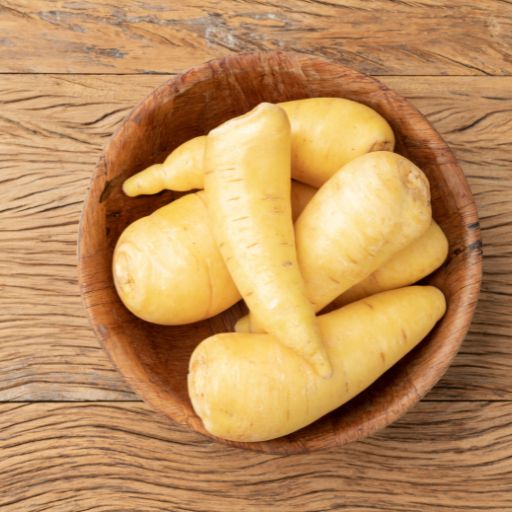
A South American root vegetable native to the Andes, arracacha tastes like a mix between carrot and celery with a hint of nuttiness. It’s typically harvested from late summer through winter. Rich in complex carbohydrates, calcium, and vitamin A, it provides steady energy and supports bone health. Often boiled, mashed, or used in soups, arracacha is a staple in Andean cuisine. (Arracacia xanthorrhiza)
19. Angelica Root
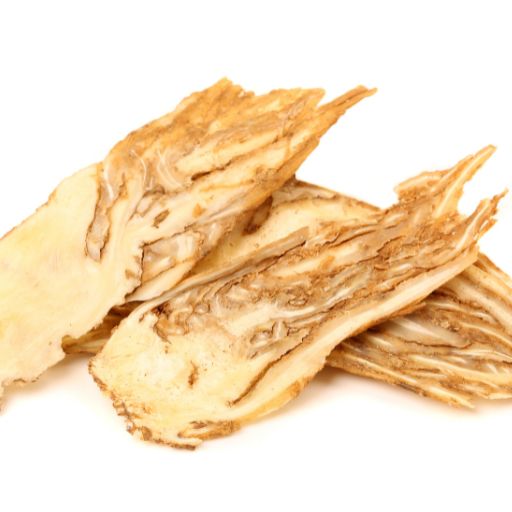
Angelica root, native to northern Europe and Asia, has an aromatic, slightly sweet, and herbal flavor. Harvested mainly in late summer, it’s prized for its digestive and anti-inflammatory benefits. Traditionally used in herbal medicine, it’s also used to flavor liqueurs like Chartreuse and vermouth, or candied for baking. (Angelica archangelica)
20. Ahipa
Originating from the Andes region of South America, ahipa is a crunchy root vegetable with a mildly sweet, nutty flavor similar to jicama. It’s typically in season during spring and summer. High in fiber, vitamin C, and water content, it helps with hydration and digestion. Ahipa is enjoyed raw in salads or sliced as a refreshing snack. (Pachyrhizus ahipa)
SPICES & HERBS
21. Allspice
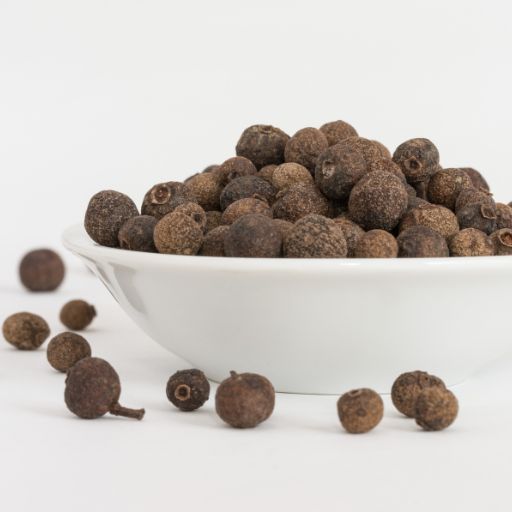
Native to Jamaica and Central America, allspice comes from the dried berries of the Pimenta dioica tree. It has a warm, complex flavor that tastes like a mix of cinnamon, nutmeg, and cloves. Harvested mainly in late summer, it’s known for its antioxidant and anti-inflammatory properties. Allspice is used in both sweet and savory dishes, including jerk seasoning, pumpkin pies, and spiced drinks. (Pimenta dioica)
22. Anise
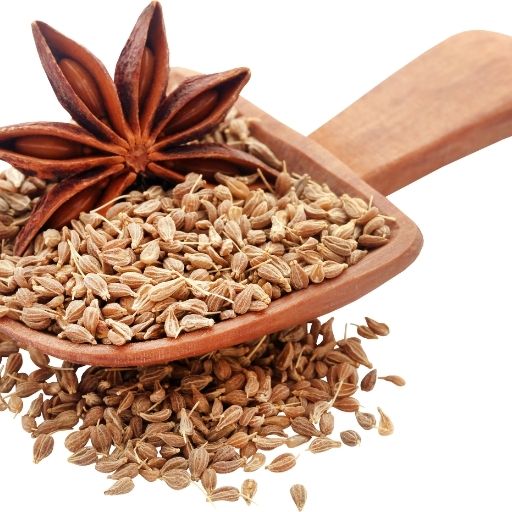
Anise, native to the eastern Mediterranean and Southwest Asia, has a sweet, licorice-like flavor that adds warmth to foods and drinks. It’s typically harvested in late summer. Rich in antioxidants and digestive compounds, anise helps soothe the stomach and reduce bloating. It’s popular in cookies, breads, herbal teas, and liqueurs like ouzo and sambuca. (Pimpinella anisum)
23. Asafoetida
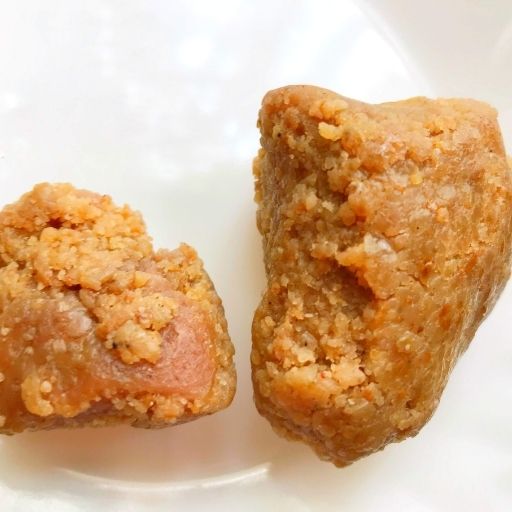
Originating from Iran and Afghanistan, asafoetida is a pungent resin derived from the roots of the Ferula plant. Its strong, garlicky aroma mellows when cooked, adding a savory umami depth to dishes. Harvested in spring and early summer, it’s valued for aiding digestion and reducing gas. Commonly used in Indian cooking, asafoetida flavors lentil stews, curries, and pickles. (Ferula assa-foetida)
24. Aleppo Pepper
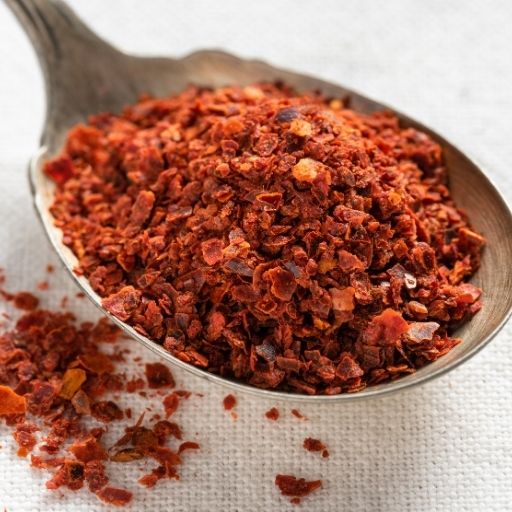
Named after the Syrian city of Aleppo, this pepper is cultivated across the Middle East and parts of Turkey. It offers a mild heat with fruity, cumin-like undertones and a hint of tanginess. Harvested in late summer, Aleppo pepper provides antioxidants and capsaicin for metabolism support. It’s used to season grilled meats, vegetables, and dips like hummus. (Capsicum annuum)
25. Annatto
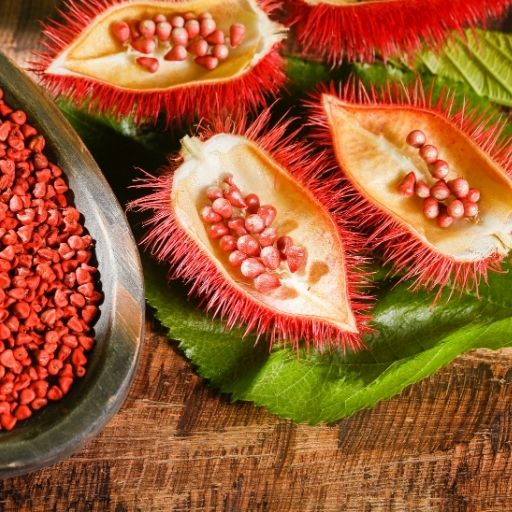
Annatto seeds come from the tropical Bixa orellana tree, native to Central and South America. They have a slightly sweet, peppery, and earthy flavor with a hint of nutmeg. Harvested year-round in warm regions, annatto is rich in carotenoids that promote eye and skin health. Often used as a natural food coloring and spice, it flavors rice dishes, stews, and cheeses like cheddar. (Bixa orellana)
26. Ajwain
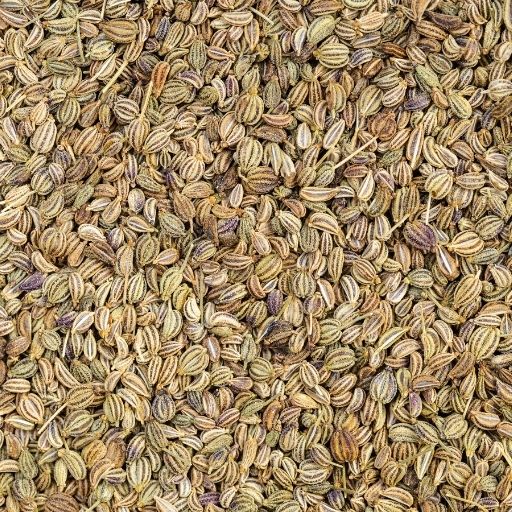
Native to India and the Middle East, ajwain seeds have a bold, thyme-like flavor with a slightly bitter edge. They’re typically harvested in late summer. Known for their digestive and antibacterial benefits, ajwain seeds are a traditional remedy for indigestion. In cooking, they’re used to flavor Indian breads, curries, and fried snacks. (Trachyspermum ammi)
27. Amchur (Dried Mango Powder)

Amchur is made from unripe green mangoes dried and ground into powder, primarily in India. It has a tangy, fruity flavor similar to tamarind but less acidic. Harvest season for mangoes is late spring through summer. Rich in vitamin C and antioxidants, amchur supports immunity and digestion. It’s used to add zest to chutneys, marinades, and Indian curries. (Mangifera indica)
28. Angelica Herb

Native to northern Europe and parts of Asia, angelica has a sweet, aromatic flavor with hints of celery and juniper. It’s harvested in late summer when the leaves and roots are most flavorful. Traditionally used for its digestive and calming properties, it’s rich in essential oils and antioxidants. Angelica flavors liqueurs, herbal teas, and candied desserts. (Angelica archangelica)
29. Ashwagandha

Originating in India and the Middle East, ashwagandha is an ancient medicinal herb with an earthy, slightly bitter taste. The root is harvested mainly in winter. Known for reducing stress and improving energy levels, it’s valued in Ayurveda as an adaptogen. Ashwagandha is often used in teas, tonics, and wellness supplements. (Withania somnifera)
30. Achiote
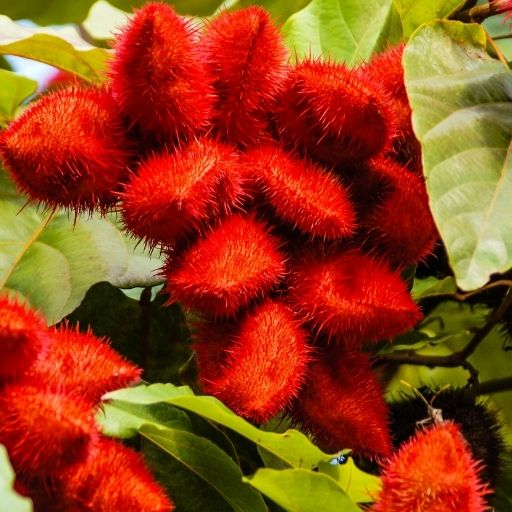
Achiote, native to tropical regions of the Americas, comes from the seeds of the Bixa orellana tree (like annatto). It has a mild, peppery flavor with hints of nuttiness and sweetness. Harvested throughout the year in warm climates, it’s rich in antioxidants and supports skin health. Achiote paste is a key ingredient in Latin American and Filipino dishes like cochinita pibil and adobo. (Bixa orellana)
GRAINS, LEGUMES & SEEDS
31. Amaranth
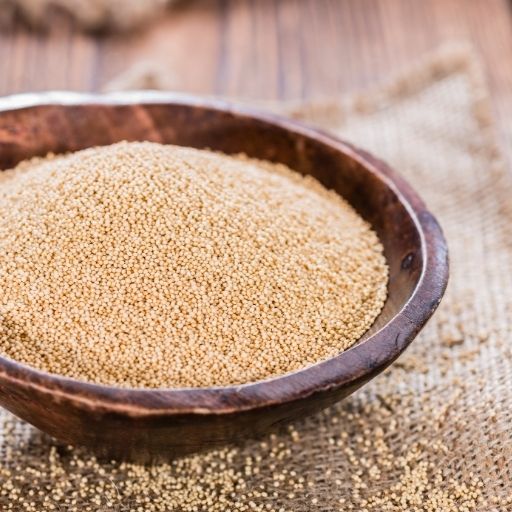
Originating in Central and South America, amaranth has been cultivated for thousands of years as a staple grain of the Aztecs. It has a nutty, slightly earthy flavor and is harvested in late summer. Rich in protein, iron, and lysine, amaranth supports muscle growth and immune health. It’s often cooked like porridge, popped like popcorn, or used in gluten-free baking. (Amaranthus caudatus)
32. Adzuki Beans
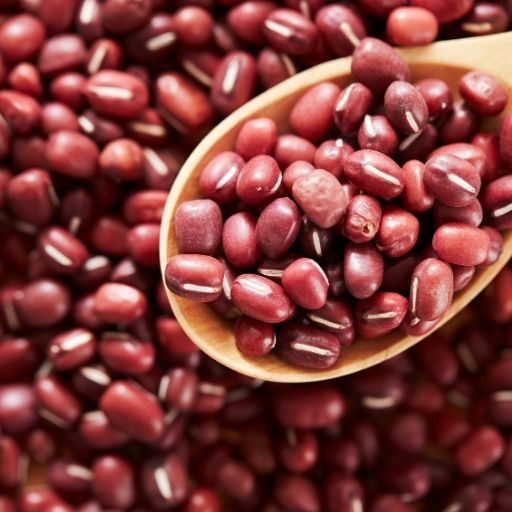
Native to East Asia, adzuki beans are small, red legumes with a mild, sweet, and nutty taste. They’re typically harvested in late summer or early fall. High in protein, fiber, and antioxidants, they promote heart health and aid digestion. Commonly used in Japanese and Korean cuisines, adzuki beans appear in sweet pastes, soups, and desserts like red bean mochi. (Vigna angularis)
33. Almonds
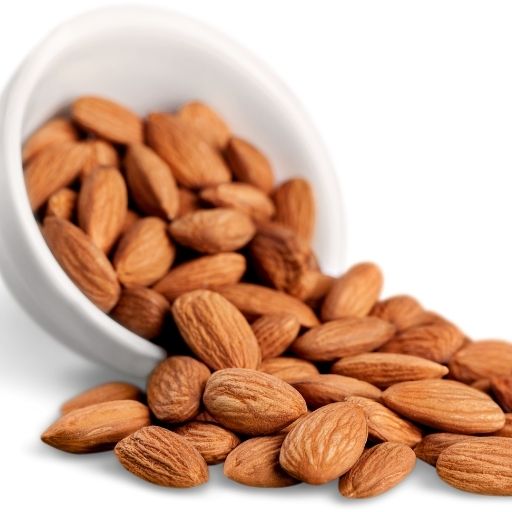
Almonds originate from the Middle East and are now widely grown in California, which leads global production. They have a rich, slightly sweet, and nutty flavor. Harvested from late summer through early fall, almonds are full of healthy fats, vitamin E, and magnesium that support heart and brain health. They’re enjoyed raw, roasted, or used in pastries, nut milks, and sauces. (Prunus dulcis)
34. Alfalfa Seeds
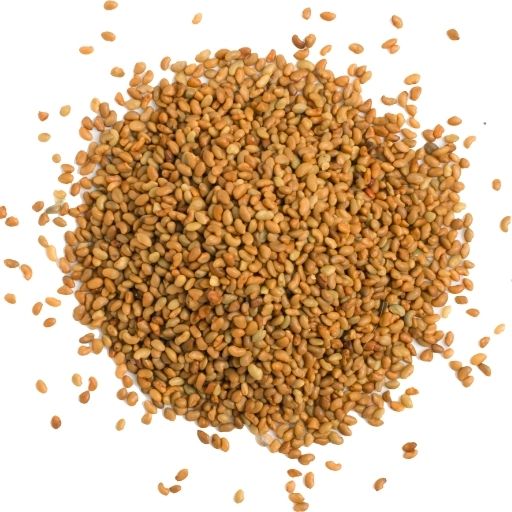
Alfalfa seeds, native to South and Central Asia, are known for their mild, grassy flavor when sprouted. They can be grown year-round indoors. These nutrient-dense seeds are packed with protein, vitamins K and C, and phytoestrogens that promote bone and heart health. The sprouts are popular in salads, sandwiches, and smoothies for a fresh crunch. (Medicago sativa)
35. Anasazi Beans
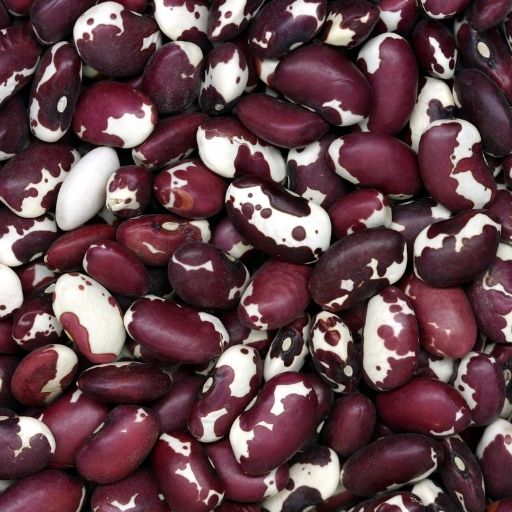
First cultivated by the ancient Pueblo people in the American Southwest, Anasazi beans have a slightly sweet, mild flavor with a creamy texture. Harvested in late summer, they cook quickly and are easy to digest. High in fiber and protein, they help balance blood sugar and support gut health. Anasazi beans are great in chili, stews, and refried bean dishes. (Phaseolus vulgaris)
36. Arborio Rice
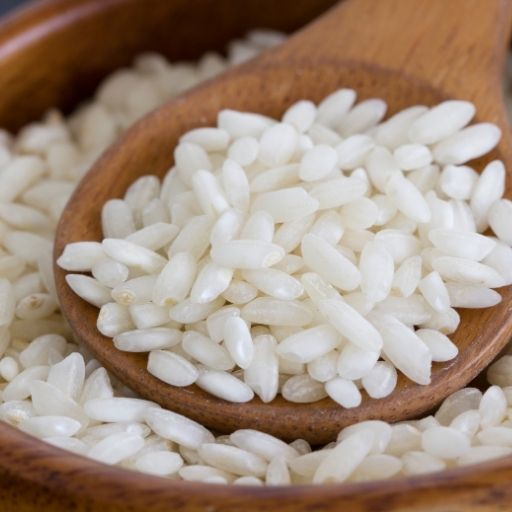
Originating in Italy’s Po Valley, Arborio rice is known for its short, plump grains and creamy texture. It has a subtle, starchy flavor and is harvested in late summer. This rice is rich in carbohydrates and provides quick energy. Arborio is best known for creating the velvety texture in risottos and rice puddings. (Oryza sativa)
37. Australian Lentils
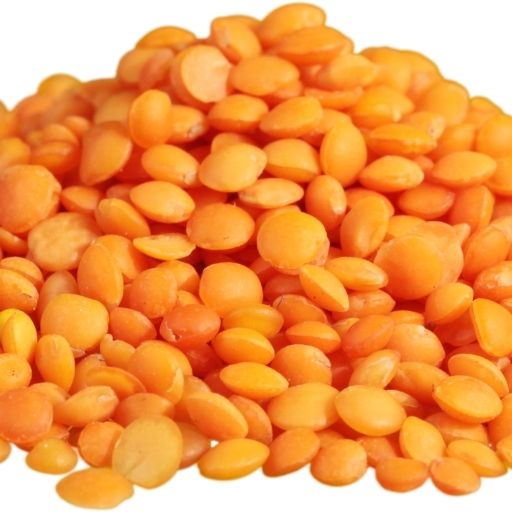
Grown primarily in South Australia, these lentils have a mild, earthy flavor with a soft texture once cooked. They’re harvested in late spring and early summer. Rich in protein, iron, and fiber, lentils support heart and digestive health. They’re widely used in soups, stews, curries, and salads. (Lens culinaris)
38. Azuki Beans (Red Beans)
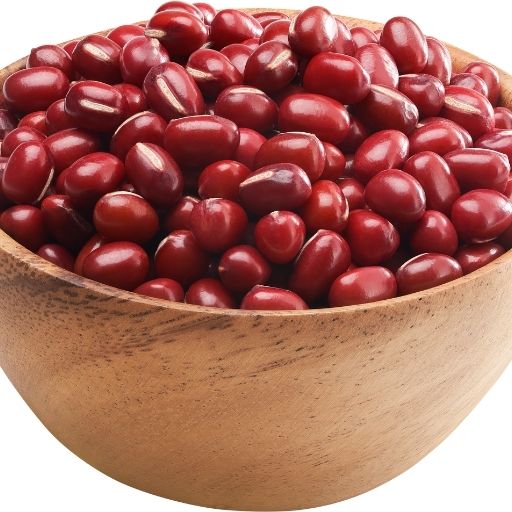
Closely related to adzuki beans, red beans are native to East Asia and are beloved for their mildly sweet, nutty flavor. Their harvest season runs from late summer to fall. They’re a rich source of plant-based protein and antioxidants, aiding metabolism and heart health. Commonly used in desserts, soups, and bean pastes, they’re especially popular in Asian sweets. (Vigna angularis)
39. Ancient Grains Mix
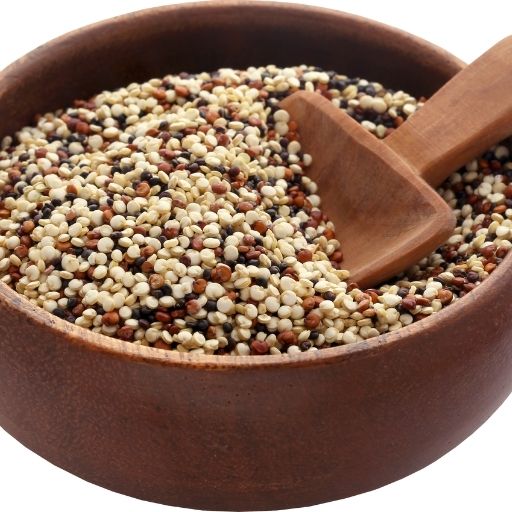
An ancient grains mix usually combines heritage grains like quinoa, millet, amaranth, and farro — crops that date back thousands of years across Africa, Asia, and the Americas. The blend offers a nutty, hearty flavor and can be grown in varying climates depending on the grain. Packed with fiber, protein, and minerals, it boosts energy and digestion. It’s ideal for salads, pilafs, and healthy grain bowls. (Various species)
40. African Pearl Millet
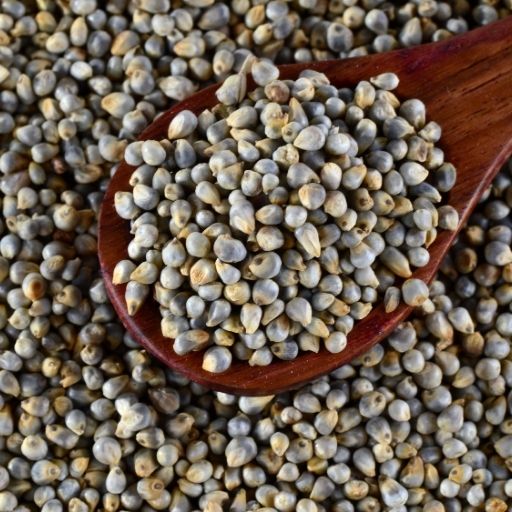
Native to the Sahel region of Africa, pearl millet is a hardy grain with a slightly nutty, earthy flavor. It thrives in arid conditions and is typically harvested in late summer. Rich in iron, magnesium, and fiber, millet helps maintain energy and supports heart health. It’s often ground into flour for porridge, flatbreads, and traditional African dishes. (Pennisetum glaucum)
DAIRY & CHEESES
41. Asiago Cheese

Originating from the Veneto region of Italy, Asiago cheese offers a flavor that ranges from smooth and mild when young to sharp and nutty when aged. It’s made year-round from cow’s milk, with the best wheels produced in spring and summer. Rich in calcium and protein, it supports bone and muscle health. Asiago melts beautifully on sandwiches, pasta, and risottos. (Bos taurus milk)
42. American Cheese

Developed in the United States, American cheese is known for its creamy, mild, and slightly salty flavor. It’s produced year-round and valued for its smooth melting quality. Containing calcium and protein, it adds richness to meals, though it’s best enjoyed in moderation. Most famously, it’s used in grilled cheese sandwiches, cheeseburgers, and casseroles. (Bos taurus milk)
43. Aged Cheddar

Cheddar cheese originated in England’s Somerset region and gains its bold, sharp flavor from months or even years of aging. Made year-round, it peaks in flavor during cooler months. It’s high in calcium and phosphorus, promoting bone health. Aged cheddar adds a robust taste to macaroni and cheese, soups, and savory pies. (Bos taurus milk)
44. Ayrshire Milk
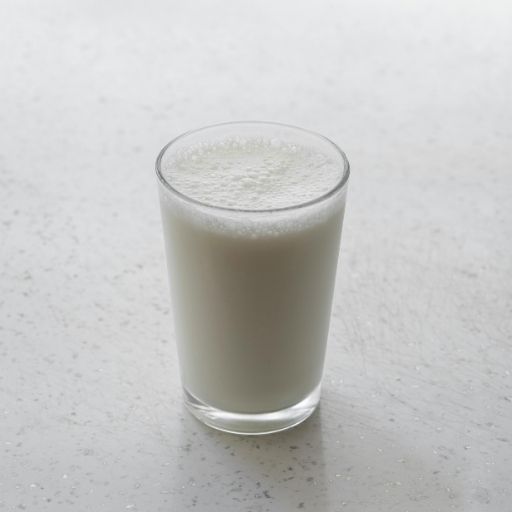
Produced from Ayrshire cows native to Scotland, this milk is prized for its balanced fat and protein content. It has a creamy, slightly sweet taste and is available year-round. Packed with calcium, vitamin D, and essential proteins, Ayrshire milk supports strong bones and muscle recovery. It’s used for drinking, coffee frothing, and artisanal cheese-making. (Bos taurus milk)
45. Alpine Cheese

Alpine cheeses, such as Gruyère and Comté, originate from the mountain regions of Switzerland and France. They have a nutty, slightly fruity flavor that deepens with age. Traditionally produced in summer when cows graze on alpine pastures, these cheeses are rich in calcium and omega-3s. Perfect for melting, they shine in fondue, raclette, and gratins. (Bos taurus milk)
46. Amasi (Fermented Milk)

A traditional dairy product from southern Africa, Amasi is fermented cow’s milk with a tangy, yogurt-like flavor. It’s available year-round and thrives in warm climates. Packed with probiotics and calcium, it supports gut health and digestion. Amasi is often enjoyed chilled as a drink or poured over porridge. (Bos taurus milk)
47. Armenian String Cheese
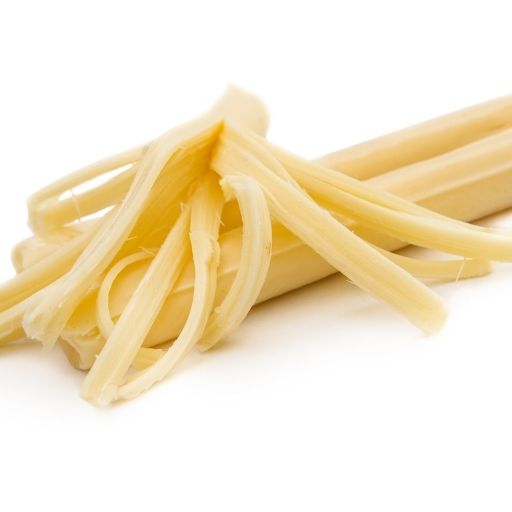
Originating from Armenia, this cheese is semi-soft with a salty, buttery flavor and a unique stringy texture. It’s made year-round, traditionally flavored with nigella seeds or caraway. Rich in calcium and protein, it helps maintain bone strength and satiety. Armenian string cheese is enjoyed as a snack or served with bread and olives. (Bos taurus milk)
48. Añejo Cheese

Añejo cheese, from Mexico, is a firm, aged cheese made from skimmed cow’s milk, with a salty, tangy flavor. It’s typically produced year-round, with peak flavor after several months of aging. High in calcium and protein, it promotes bone and muscle health. Añejo is often crumbled over tacos, enchiladas, and salads. (Bos taurus milk)
49. Applewood Smoked Cheese
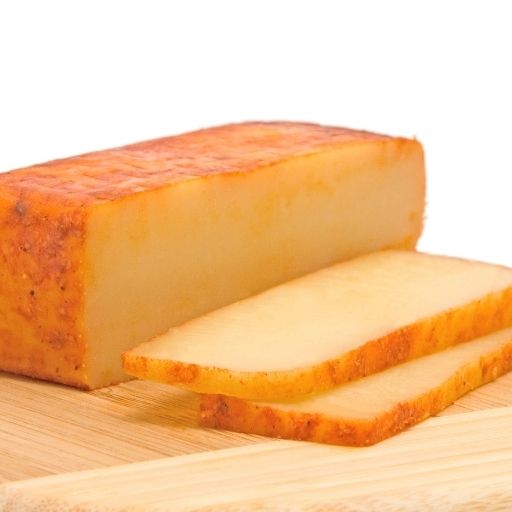
Originating in England, Applewood smoked cheese has a creamy texture and a distinctive smoky flavor with a hint of paprika. Made year-round from cow’s milk, it’s rich in calcium and provides a satisfying source of protein. It’s delicious on burgers, sandwiches, or cheese platters for a smoky twist. (Bos taurus milk)
50. Austrian Emmental

Hailing from Austria, this Emmental-style cheese features a mild, nutty flavor and its signature “holes” formed during aging. Produced year-round, it’s especially popular in cooler months. Packed with calcium and vitamin B12, it supports energy and bone health. Austrian Emmental melts beautifully in sandwiches, fondues, and casseroles. (Bos taurus milk)
BREADS, PASTA & GRAIN-BASED FOODS
51. Angel Hair Pasta
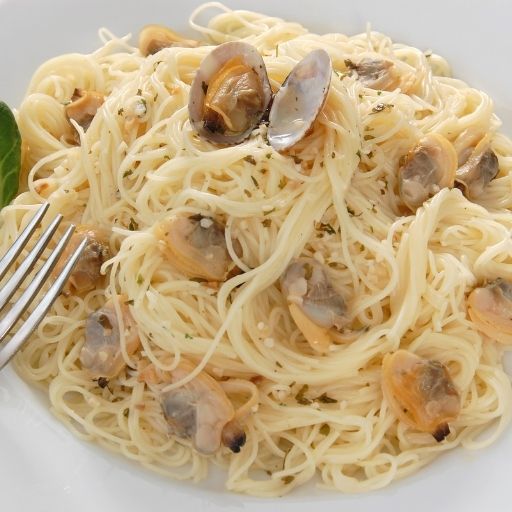
Originating from Italy, angel hair pasta—also known as capellini—is a thin, delicate pasta made from durum wheat semolina. It has a light, silky texture and a mild, neutral flavor that pairs beautifully with simple sauces. Available year-round, it’s a good source of carbohydrates and energy. Often served with olive oil, seafood, or light tomato sauces, it’s ideal for quick, elegant meals. (Triticum durum)
52. Anadama Bread

A traditional New England bread, Anadama bread is made from wheat flour, cornmeal, and molasses, giving it a slightly sweet, hearty taste. Baked year-round, it’s rich in fiber and iron, supporting digestive and energy health. This rustic loaf is perfect for breakfast toast, sandwiches, or served warm with butter and soups. (Triticum aestivum)
53. Apple Strudel

Originating in Austria, apple strudel is a flaky pastry filled with spiced apples, sugar, and raisins. It has a sweet, tart flavor wrapped in buttery layers of dough. Usually enjoyed in fall when apples are in season, it’s a comforting dessert rich in fiber and antioxidants from the fruit. Apple strudel is often served warm with vanilla sauce or ice cream. (Malus domestica)
54. Almond Croissant

A French pastry beloved worldwide, the almond croissant features buttery, flaky layers filled with sweet almond paste and topped with sliced almonds. Available year-round in bakeries, it offers healthy fats and vitamin E from almonds. It’s enjoyed as a breakfast treat or an indulgent afternoon snack with coffee. (Prunus dulcis)
55. Arepa
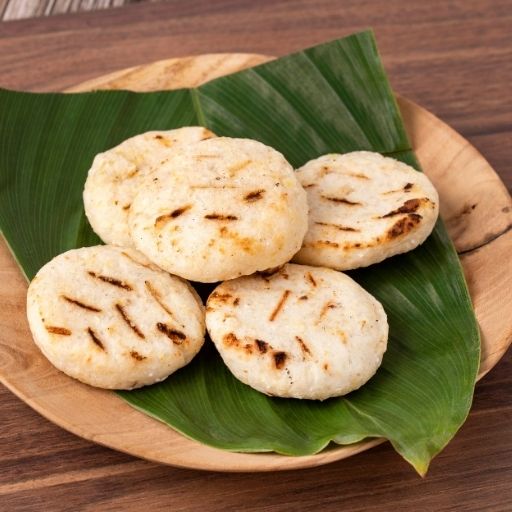
Native to Venezuela and Colombia, arepas are cornmeal patties with a soft inside and crispy crust. Mildly savory with a hint of sweetness, they’re made year-round using pre-cooked corn flour. Naturally gluten-free and rich in carbohydrates, arepas provide lasting energy. They’re stuffed with cheese, meats, or beans for a delicious and versatile meal. (Zea mays)
56. Arancini
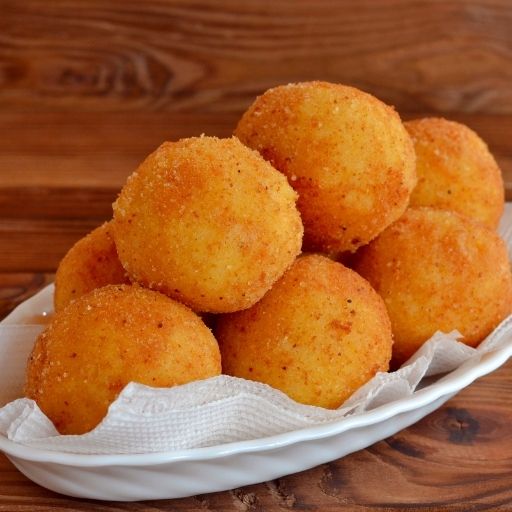
Originating from Sicily, arancini are golden, fried rice balls stuffed with cheese, meat, or vegetables. They have a savory, rich flavor and a satisfying crunch. Made year-round, they’re high in energy and provide protein and fiber when filled with legumes or grains. Arancini are enjoyed as street food or appetizers across Italy. (Oryza sativa)
57. Agnolotti Pasta
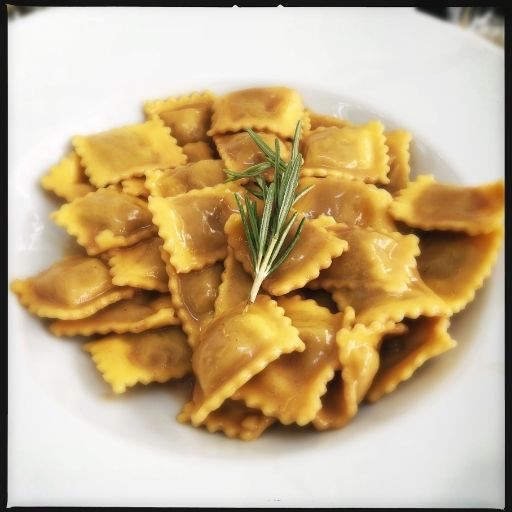
Agnolotti pasta hails from the Piedmont region of Italy and resembles small, filled pockets similar to ravioli. It has a tender bite and absorbs sauces beautifully. Prepared throughout the year, it’s rich in carbohydrates and protein when filled with meats or cheese. Agnolotti is often served in butter-sage sauce or light broths. (Triticum durum)
58. Anpan (Japanese Bread)

Anpan is a soft Japanese bread roll filled with sweet red bean paste, first created in the 19th century. It has a subtly sweet flavor and pillowy texture. Available all year, it offers carbohydrates for energy and plant-based protein from beans. Anpan is a popular snack or tea-time treat across Japan. (Triticum aestivum)
59. Amaretti Cookies

Originating in Italy, amaretti cookies are crisp on the outside and chewy inside, with an intense almond flavor. Made from almonds, egg whites, and sugar, they’re baked year-round. Rich in plant-based protein and vitamin E, they’re a satisfying sweet treat. These cookies are often served with coffee or crumbled over desserts like tiramisu. (Prunus dulcis)
60. Appam (Rice Pancake)

Appam, a South Indian delicacy, is a soft, bowl-shaped pancake made from fermented rice and coconut batter. It has a slightly tangy flavor and airy texture. Prepared year-round, it’s gluten-free and aids digestion thanks to natural fermentation. Appam is commonly served with coconut milk, stews, or spicy curries. (Oryza sativa)
CONDIMENTS & SAUCES
61. Aioli

Originating from the Mediterranean region, especially southern France and Spain, aioli is a creamy garlic-based sauce made from olive oil, garlic, and lemon juice. It has a rich, tangy, and slightly pungent flavor. Made year-round, it’s known for its heart-healthy fats and antioxidants from olive oil. Aioli is perfect as a dip for fries, spread on sandwiches, or served with seafood. (Allium sativum)
62. Alfredo Sauce

First created in Rome, Alfredo sauce blends butter, cream, and Parmesan cheese into a silky, indulgent sauce. It has a mild, buttery flavor with a savory cheese note. Available year-round, it provides calcium and energy from healthy fats. Most famously used in fettuccine Alfredo, it also complements chicken, seafood, and vegetable pasta dishes. (Bos taurus milk)
63. Apple Butter
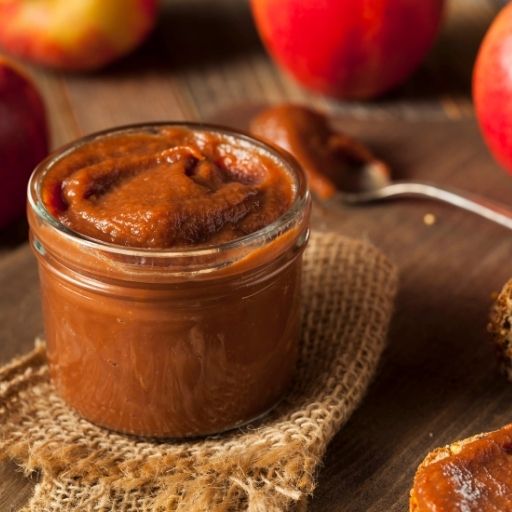
Apple butter originated in Europe and became popular in American farm kitchens. It has a smooth, spreadable texture and a deep, caramelized apple flavor with warm spice notes. Best made in fall during apple season, it’s rich in antioxidants and fiber. Apple butter is delicious on toast, pancakes, and in baked goods. (Malus domestica)
64. Apple Chutney
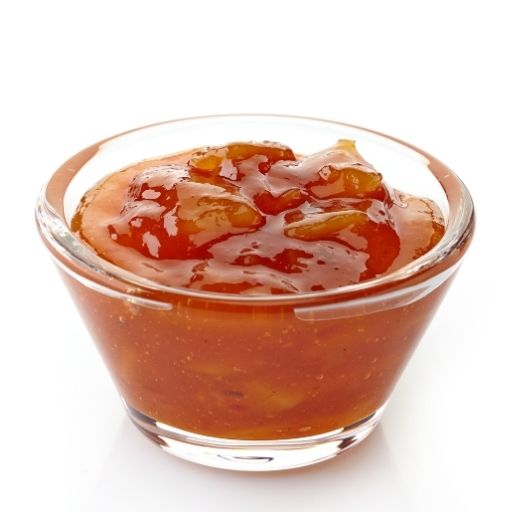
Commonly made in India and the UK, apple chutney combines apples, vinegar, sugar, and spices for a tangy-sweet condiment. It’s often prepared in autumn when apples are abundant. Packed with vitamin C and fiber, it supports digestion and immunity. Apple chutney pairs beautifully with roasted meats, curries, and cheese boards. (Malus domestica)
65. Apricot Jam
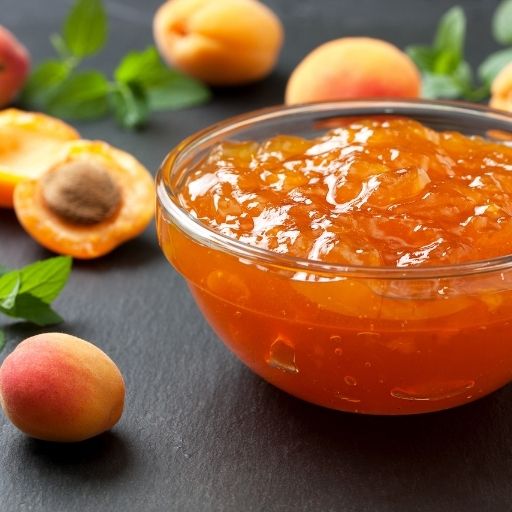
Originating in Central Asia and now loved worldwide, apricot jam has a sweet, slightly tart flavor with a golden hue. Typically made in summer when apricots are ripe, it’s a source of vitamin A and antioxidants that benefit eye and skin health. Spread on toast or used as a pastry glaze, it adds a burst of natural sweetness. (Prunus armeniaca)
66. Anchovy Paste

Popular in Mediterranean cuisine, anchovy paste is made from ground anchovies, salt, and oil. It has a salty, umami flavor that adds depth to sauces and dressings. Available year-round, it’s high in omega-3 fatty acids and protein, which support heart and brain health. It’s commonly used in Caesar dressing, pasta sauces, and tapenades. (Engraulidae family)
67. Agave Syrup
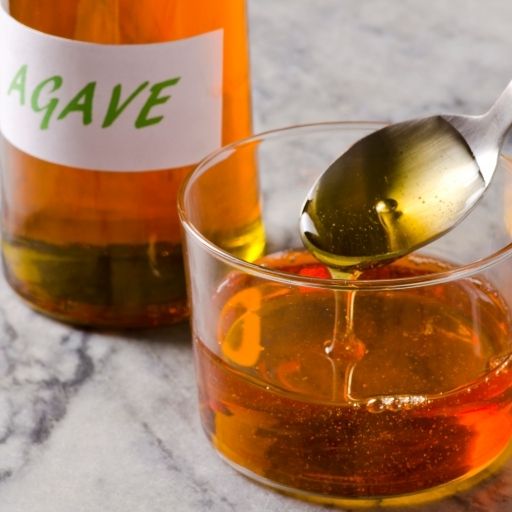
Native to Mexico, agave syrup (or nectar) is derived from the blue agave plant. It has a mild, caramel-like sweetness with a thin consistency. Harvested year-round, it’s a natural sweetener with a lower glycemic index than sugar. Agave syrup is used to sweeten beverages, desserts, and baked goods. (Agave tequilana)
68. Aged Balsamic Vinegar

Originating in Modena, Italy, aged balsamic vinegar is made from grape must that’s fermented and matured in wooden barrels. It has a complex, sweet-tart flavor with a syrupy texture. Available year-round, it’s rich in antioxidants that support heart health. Drizzle it over salads, grilled vegetables, or strawberries for a gourmet touch. (Vitis vinifera)
69. Avocado Dip
A Mexican favorite, avocado dip—often called guacamole—is made from mashed avocados, lime, and seasonings. It has a creamy texture and a refreshing, tangy taste. Avocados peak in late winter through summer and are packed with healthy fats and potassium for heart wellness. This dip pairs perfectly with tortilla chips, tacos, or veggie sticks. (Persea americana)
70. Apple Cider Vinegar
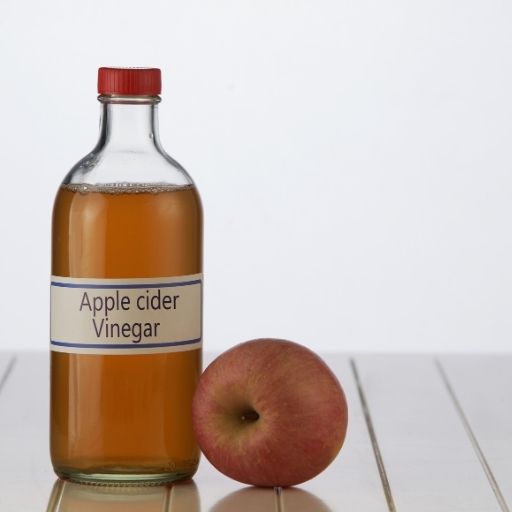
Apple cider vinegar, believed to have ancient roots in Europe, is made by fermenting apple juice into a tangy, acidic liquid. It has a sharp flavor with fruity undertones and is available year-round. Known for aiding digestion and balancing blood sugar, it’s a kitchen staple for dressings, marinades, and wellness drinks. (Malus domestica)
SNACKS & SWEETS
71. Almond Brittle

Originating from Europe and popularized in the United States, almond brittle is a crunchy candy made by caramelizing sugar and mixing it with roasted almonds. It has a sweet, nutty flavor with a satisfying snap. Made year-round, it provides healthy fats and vitamin E from almonds. Often enjoyed as a snack or dessert topping, it pairs well with coffee or ice cream. (Prunus dulcis)
72. Apple Pie

A beloved American classic with European roots, apple pie features tender spiced apples baked in a flaky pastry crust. It has a warm, sweet, and slightly tart flavor. Most popular in fall when apples are in season, it’s rich in fiber and antioxidants. Apple pie is served as a comforting dessert, often topped with vanilla ice cream or whipped cream. (Malus domestica)
73. Angel Food Cake

Developed in the United States in the 19th century, angel food cake is a light, fluffy dessert made with whipped egg whites and no butter. It tastes subtly sweet with a delicate vanilla note. Enjoyed year-round, it’s low in fat and calories while offering a soft source of protein from egg whites. It’s commonly paired with berries and whipped cream. (Gallus gallus domesticus)
74. Apricot Tart

Originating from France, the apricot tart combines buttery pastry with a sweet-tart fruit filling. Its flavor balances the natural tanginess of apricots with rich, caramelized notes. Usually made in summer when apricots are ripe, it’s high in vitamin A and antioxidants. Served warm or chilled, it’s a favorite dessert in cafés and home kitchens alike. (Prunus armeniaca)
75. Animal Crackers

Invented in England and later produced in the U.S., animal crackers are lightly sweet, crunchy cookies shaped like zoo animals. They have a mild vanilla flavor and are made year-round. Though a treat, they offer a bit of calcium and iron. Popular with children, they’re great for snacking or decorating desserts. (Triticum aestivum)
76. Apple Chips
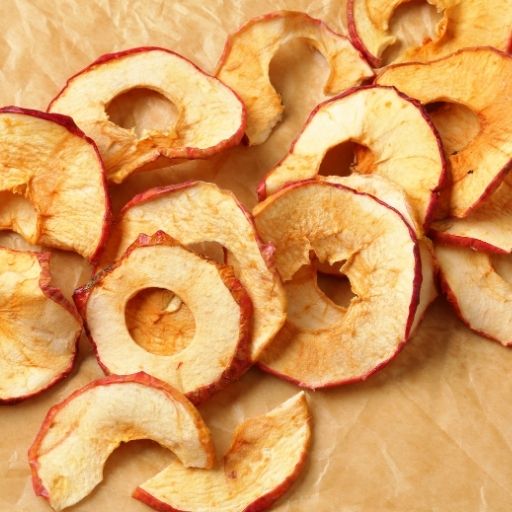
Apple chips, made by dehydrating or baking thin apple slices, originated as a healthy snack in the U.S. They have a naturally sweet, crisp texture with a hint of cinnamon. Best made in autumn, they retain fiber and antioxidants from fresh apples. A great alternative to fried snacks, apple chips are perfect for on-the-go munching. (Malus domestica)
77. Almond Butter Cups

A modern twist on the classic peanut butter cup, almond butter cups originated in North America and feature a rich blend of creamy almond butter coated in chocolate. They taste nutty, sweet, and indulgent. Made year-round, they provide protein, fiber, and healthy fats. These treats are ideal for satisfying sweet cravings in a healthier way. (Prunus dulcis)
78. Aero Chocolate Bar

First created in England in the 1930s, the Aero bar is famous for its bubbly, airy texture that melts instantly on the tongue. It has a smooth, creamy chocolate flavor. Available year-round, it’s an energy-boosting sweet enjoyed worldwide. Aero bars are often used in desserts, milkshakes, or eaten straight from the wrapper. (Theobroma cacao)
79. Amaretto Cookies

Originating in Italy, amaretto cookies are crisp almond-flavored treats made with almond flour or apricot kernels. They have a sweet, nutty aroma with a hint of bitterness from amaretto liqueur. Baked year-round, they’re a good source of vitamin E and plant-based protein. Commonly served with coffee or wine, they’re also used in layered desserts like tiramisu. (Prunus dulcis)
80. Apple Turnover

A European pastry favorite, the apple turnover is made with puff pastry filled with sweet spiced apple filling. It tastes warm, buttery, and fruity with a crisp crust. Often enjoyed in fall, it offers fiber and vitamin C from the apples. Perfect for breakfast or dessert, apple turnovers are served dusted with sugar or drizzled with icing. (Malus domestica)
BEVERAGES
81. Apple Juice
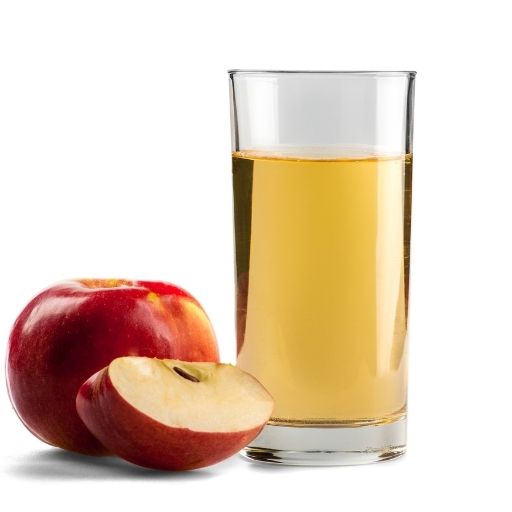
Apple juice, enjoyed globally but especially popular in the U.S. and Europe, is made by pressing fresh apples into a naturally sweet and refreshing drink. It has a crisp, fruity flavor that varies from tart to honey-like depending on the apple variety. Most commonly produced in fall, it’s rich in vitamin C and antioxidants that support immunity. Apple juice is enjoyed chilled on its own or used as a base for smoothies and mocktails. (Malus domestica)
82. Apple Cider

Originating in Europe and beloved in North America, apple cider is an unfiltered beverage made from pressed apples, offering a tangy-sweet taste with a cloudy texture. Its peak season is autumn, when apples are freshly harvested. Packed with antioxidants and polyphenols, it promotes heart health and digestion. Often served warm with spices or cold and sparkling, cider captures the flavor of fall. (Malus domestica)
83. Almond Milk

First created in the Middle East centuries ago, almond milk is a plant-based drink with a mild, nutty flavor and creamy texture. It’s available year-round and serves as a nutritious dairy alternative, containing vitamin E and healthy fats that support skin and heart health. Commonly used in coffee, cereal, and smoothies, almond milk adds a subtle sweetness to recipes. (Prunus dulcis)
84. Apricot Nectar
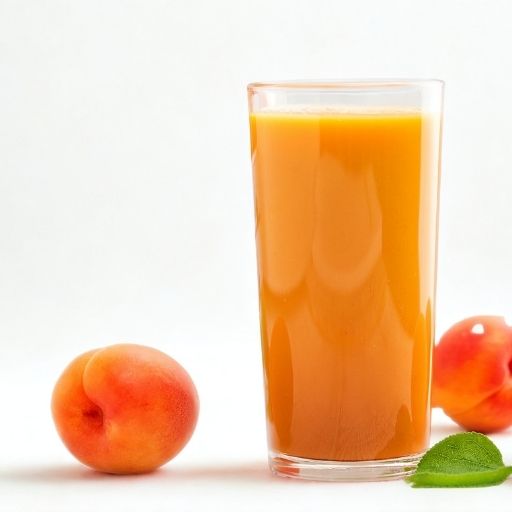
Originating in the Mediterranean and Middle East, apricot nectar is a thick, sweet drink made from blended apricots and sugar or honey. It has a smooth, velvety texture with a bright, fruity taste. Typically in season during summer, it’s rich in vitamin A and antioxidants that aid eye and skin health. Apricot nectar is enjoyed on its own or as a mixer in cocktails and desserts. (Prunus armeniaca)
85. Americano Coffee

The Americano coffee originated during World War II when American soldiers in Italy diluted espresso with hot water to mimic drip coffee. It has a bold yet smooth flavor with less intensity than pure espresso. Brewed year-round, it’s full of antioxidants that enhance focus and energy. Americano is a coffeehouse favorite, served hot or iced for a simple, strong pick-me-up. (Coffea arabica)
86. Ale Beer

Ale, one of the oldest beer styles, originated in Europe and is brewed using top-fermenting yeast at warm temperatures. It offers a malty, sometimes fruity flavor depending on the variety. Brewed year-round, ale contains small amounts of B vitamins and antioxidants when consumed in moderation. It pairs beautifully with grilled meats, cheeses, and pub-style dishes. (Hordeum vulgare)
87. Arnold Palmer Drink

Named after the famous American golfer, the Arnold Palmer drink blends iced tea and lemonade for a refreshing balance of sweet and tart. Popular in the summer months, it’s a hydrating, caffeine-light beverage. It provides antioxidants from tea and vitamin C from lemons, supporting hydration and wellness. Perfect for picnics or golf days, it’s a classic warm-weather favorite. (Citrus limon)
88. Atole

Atole is a traditional Mexican beverage made from corn masa, milk, cinnamon, and piloncillo (unrefined sugar). It has a creamy, lightly sweet flavor with warm spice notes. Most popular in winter and during holidays, it’s rich in carbohydrates and calcium for energy and bone strength. Atole is often served with tamales or pan dulce at breakfast. (Zea mays)
89. Absinthe

Originating in Switzerland and France, absinthe is a high-proof herbal spirit made from wormwood, anise, and fennel. It has a strong licorice-like taste with herbal undertones. Distilled year-round, it’s consumed in small amounts and traditionally mixed with water to release its flavors. Absinthe is used in classic cocktails like the Sazerac or served ceremoniously over a sugar cube. (Artemisia absinthium)
90. Aloe Vera Juice
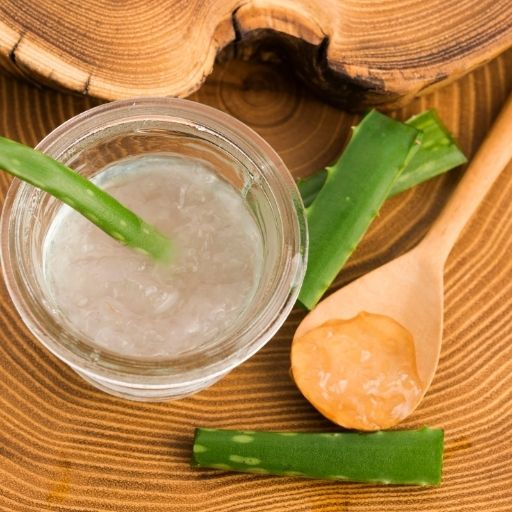
Aloe vera juice, derived from the gel inside the aloe plant’s leaves, is popular across tropical regions and in wellness circles worldwide. It has a slightly bitter, herbal flavor with a cooling effect. Available year-round, it’s prized for aiding digestion, hydration, and skin health. Often enjoyed on its own or blended into smoothies, it’s a soothing, natural drink for overall wellness. (Aloe barbadensis miller)
DISHES & RECIPES
91. Alfredo Pasta

Originating in Rome, Italy, Alfredo pasta is made with fettuccine tossed in a creamy sauce of butter, Parmesan cheese, and cream. It has a rich, velvety flavor with a hint of nuttiness from the cheese. Enjoyed year-round, it provides calcium and protein from dairy. Alfredo pasta is often paired with chicken, shrimp, or vegetables for a hearty meal. (Bos taurus milk)
92. Aloo Gobi

Aloo Gobi, a classic Indian dish, combines potatoes (aloo) and cauliflower (gobi) with spices like turmeric, cumin, and coriander. It has a warm, savory flavor with earthy undertones. Typically enjoyed year-round, it’s packed with fiber, vitamin C, and antioxidants. This vegetarian favorite is served with roti, naan, or steamed rice. (Solanum tuberosum)
93. Antipasto
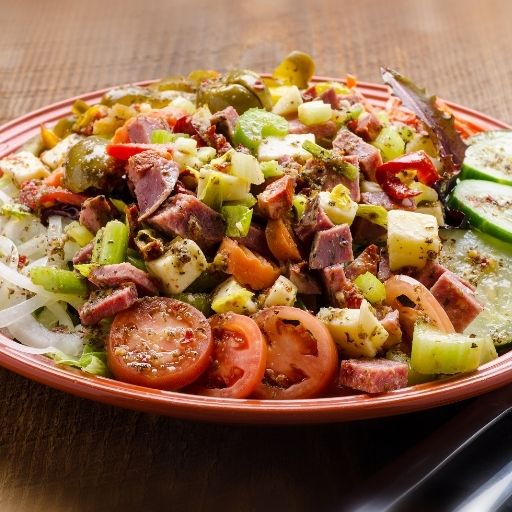
Antipasto, meaning “before the meal” in Italian, is a platter featuring cured meats, cheeses, olives, and marinated vegetables. It offers a savory, tangy flavor mix that excites the palate. Served year-round, it provides healthy fats, proteins, and antioxidants. Antipasto is a popular starter at Italian gatherings or wine pairings. (Olea europaea)
94. Apple Crumble
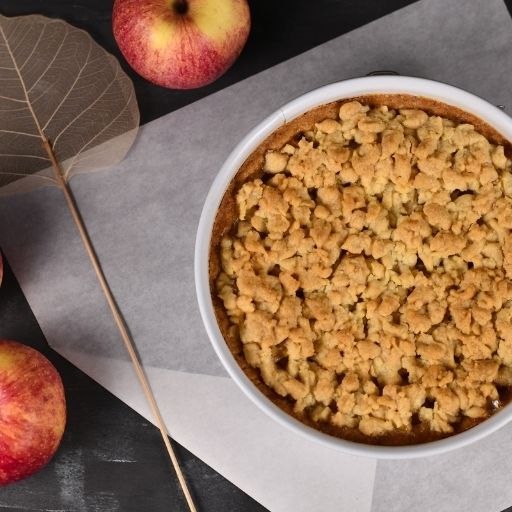
Apple crumble, a comforting dessert from Britain, features baked spiced apples topped with a crisp, buttery crumble. It tastes sweet, tart, and warmly spiced. Best made in fall when apples are fresh, it offers fiber and vitamin C. Served warm with cream or ice cream, it’s a cozy dessert perfect for any occasion. (Malus domestica)
95. Arroz con Pollo
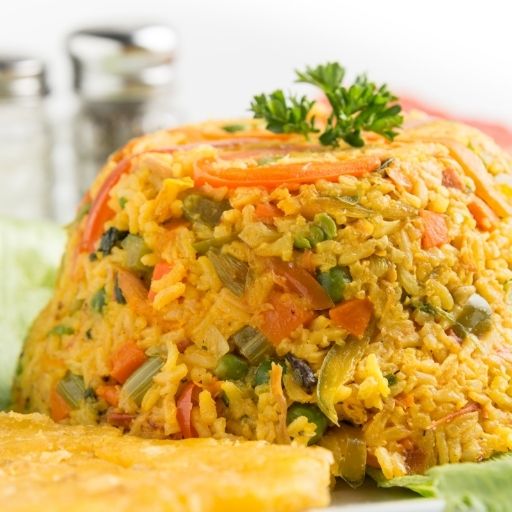
A beloved Latin American and Spanish dish, arroz con pollo translates to “rice with chicken.” It has a savory, aromatic flavor with hints of saffron or paprika. Enjoyed throughout the year, it provides protein, vitamins, and energy-rich carbohydrates. This one-pot comfort meal is often served with peas, peppers, or olives. (Oryza sativa)
96. Avocado Toast

Avocado toast, a modern breakfast favorite, originated in Australia and quickly gained worldwide popularity. It has a creamy, nutty flavor with a crunchy bread base. Made year-round, it’s full of healthy fats, potassium, and fiber. Topped with eggs, tomatoes, or seeds, it’s a nutritious and versatile snack or meal. (Persea americana)
97. Albondigas (Meatballs)
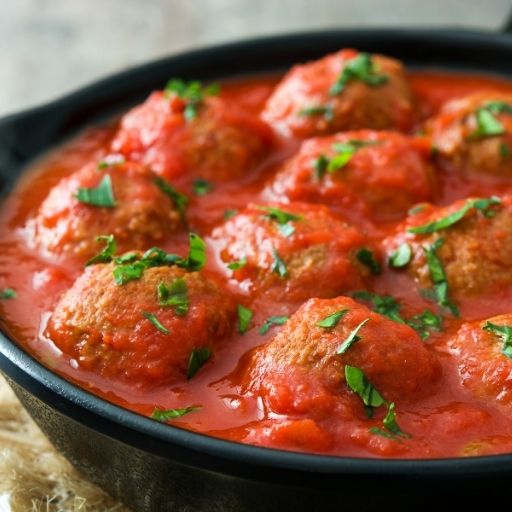
Albondigas, Spanish for “meatballs,” originated in Spain and became a staple across Latin America. They’re tender, savory, and seasoned with herbs and spices. Available year-round, they’re rich in protein and iron for energy and strength. Albondigas are often served in tomato-based sauces or soups with rice. (Bos taurus)
98. Asopao (Puerto Rican Stew)
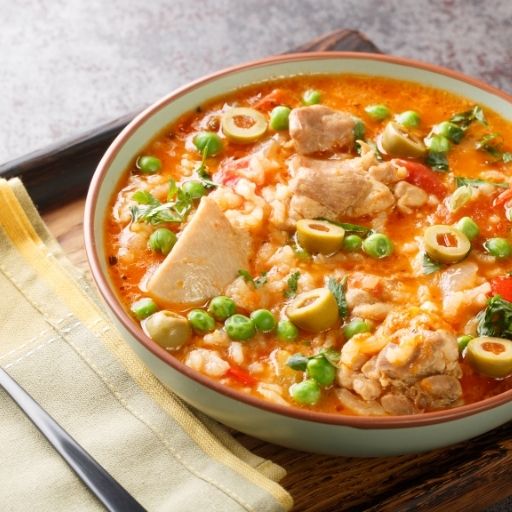
Asopao is a hearty Puerto Rican stew that blends rice, chicken, and vegetables into a thick, comforting dish. It has a savory, slightly spicy flavor reminiscent of a cross between soup and risotto. Enjoyed year-round, it’s packed with protein, vitamins, and fiber. Asopao is often served during celebrations or as a warming comfort food. (Oryza sativa)
99. Ahi Poke
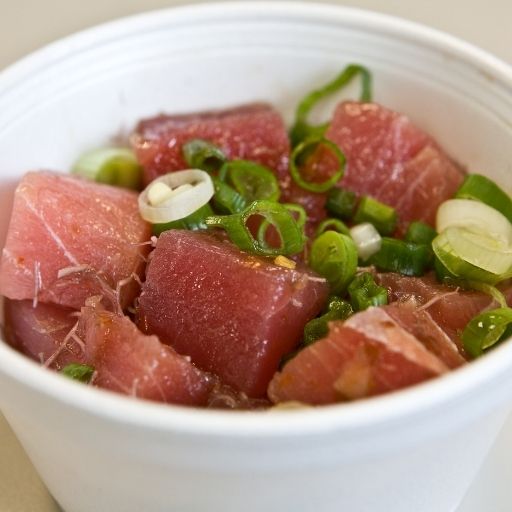
Ahi poke, native to Hawaii, features raw tuna cubes marinated in soy sauce, sesame oil, and green onions. It has a fresh, savory, and slightly nutty taste. Served mostly in warm months, it’s rich in omega-3 fatty acids and protein. Ahi poke is enjoyed as an appetizer or atop rice bowls for a light, nutritious meal. (Thunnus albacares)
100. Agnolotti with Butter Sauce

Agnolotti with butter sauce originates from Italy’s Piedmont region and consists of small pasta pockets filled with meat, cheese, or vegetables. It has a delicate, savory flavor complemented by the richness of melted butter and herbs. Enjoyed year-round, it’s a comforting source of carbs and protein. This elegant dish is often served as a main course in fine Italian dining. (Triticum durum)
